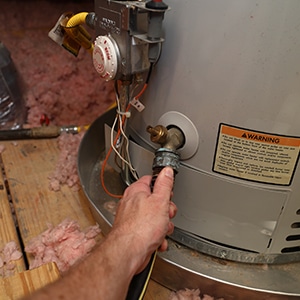ABOUT THE AUTHOR
Max Rose
Max Rose is the owner of Four Seasons Plumbing, a plumbing company in Asheville, North Carolina.

Water heaters are one of the most important appliances in your home. However, just installing the water heater is not enough. The water heater must be well maintained to remain efficient and have a long life. Unfortunately, many people ignore the importance of water heater maintenance, and various kinds of problems arise as a result. These issues could largely be avoided with regular maintenance.
There are various benefits of the proper maintenance of your water heater. Among them, draining and flushing the heater is important for clearing away any kind of sediment that might have been deposited in the tank. Ignoring this process allows sediment to accumulate, possibly leading to a clogged valve or pipe and possible pipe cleaning, which is quite a time-intensive process.
How does flushing and draining of water heater work?
Draining and flushing are two integral parts of maintaining a water heater. Many people think that flushing and draining are the same things. Actually, they are quite different.
Draining the water heater empties the tank of all water. This process removes stale water and drains away some of the sediment that has accumulated in the tank. Flushing the water heater then runs fresh water through the empty tank to remove any remaining sediment.
For maintaining the quality of the tank and the water heater, draining and flushing should be performed per the recommendations listed on your equipment. If no schedule is provided, a quick call to Four Seasons Plumbing can provide you with the information you need. Both draining and flushing of the water heater should be done a minimum of once a year. However, if you live in an area where there is very hard water, the process may need to be done at an interval of every six months or so. This helps in retaining the performance of the water heater for a long time.
Draining the water heater
For proper maintenance of a water heater, the water supply should be completely shut off first so that complete draining from the system takes place. When you are planning to drain the heater, turn off the water heater and let the water in the tank cool. Next, connect a hose to the drain and open the drain valve so that the old water flows out completely. Draining the water may take some time.
Flushing the water heater
Flushing takes place when turning the valve back on. Dirty water, along with sediment, is flushed out by the clean water. Continue flushing to wash out all sediment present in the heater.
Once everything is done, close the drain, allow the tank to refill with fresh water, and turn on the water heater.
ABOUT THE AUTHOR
Max Rose is the owner of Four Seasons Plumbing, a plumbing company in Asheville, North Carolina.